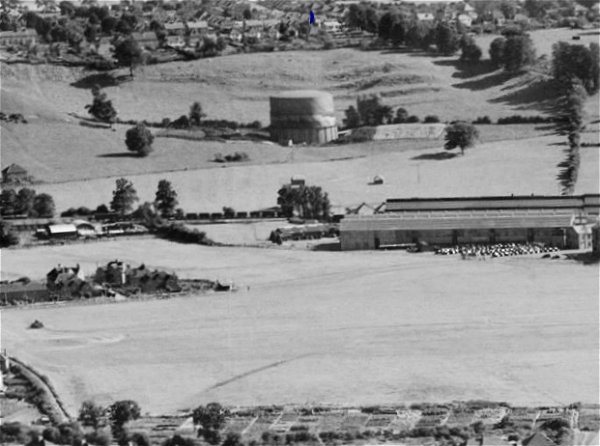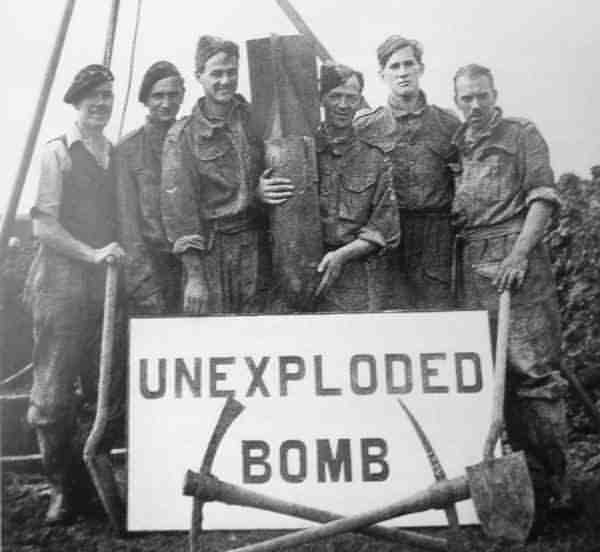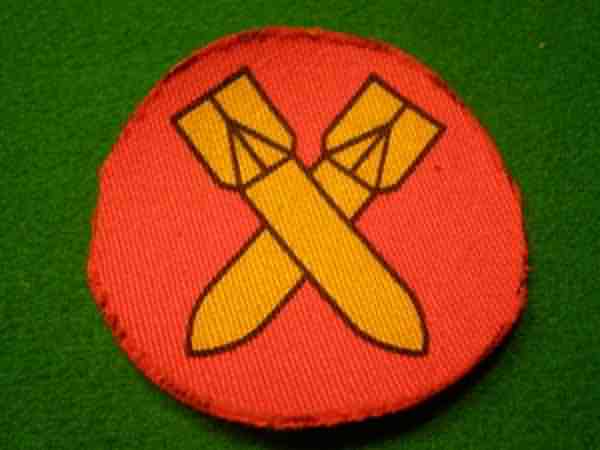yeovil at War
Westlands Bomb Disposal Unit
A very special Home Guard unit
During the Second World War, the Home Guard usually took on the task of locating unexploded bombs after raids and, if such bombs were found, would assist in sealing off the danger area and evacuating civilians. It was not common for Home Guard units to have their own Bomb Disposal Units - more properly known as a Home Guard Auxiliary Bomb Disposal Sub-Unit. Most Home Guard wartime fatalities, more than one hundred nationwide, occurred in the task of bomb disposal.
However, with the Westland factory being an obvious target for the Luftwaffe, it was considered necessary for the Westlands Company of Home Guard to have its own Bomb Disposal Unit (BDU) from the very outset - the formation of the Local Defence Volunteers (later re-named Home Guard) in May 1940.
The Westlands BDU's first action came when bombs were dropped near the gas holder close to where Lysander Road now runs (see Gallery). Although they had yet to be trained, the men of the BDU packed gun cotton to an unexploded bomb, which they then detonated from a suitably safe distance. Lieutenant Ted Frost was then sent to Melksham, where he attended a Royal Engineers' bomb disposal course - returning as a qualified Bomb Disposal Officer.
The Westlands BDU was a ten-man team of volunteers but, other than Ted Frost, very few names are known of these brave men and only Lionel Chappell and Peter Brown are known from the photograph below. One other known man was 'Sapper' Knapper who, because he was deaf, was unable to carry out certain bomb disposal duties.
Below is the only known photograph of the Westland Home Guard's BDU posing with a German 50kg bomb. The bomb was designated 'SC50' which stood for Sprengbombe Cylindrisch (English = cylindrical explosive bomb) and was a general purpose bomb used by the Luftwaffe during the Second World War.
The BDU did not just operate at the Westlands site, but within a ten-mile radius of Yeovil. During the course of the war, the unit dealt with around half a dozen unexploded bombs.
gallery

At the centre is the Lysander Road gas holder (before Lysander Road was even thought of) photographed in 1953. Westland airfield covers the lower half of the photograph with the start of the factory buildings at centre right. The Westlands BDU's first operation was to destroy an unexploded bomb close to the gas holder.

Men of the Westlands Bomb Disposal Unit pose with a German 50 kg bomb. The bomb was designated 'SC50' which stood for Sprengbombe Cylindrisch (English = cylindrical explosive bomb) and was a general-purpose high explosive bomb used by the Luftwaffe during the Second World War. A Heinkel 111 could carry up to 32 of these bombs.
Only Peter Brown, third from left, and Lionel Chappell (holding the bomb) have been identified in this photograph.

A Home Guard Bomb Disposal Officer's badge.